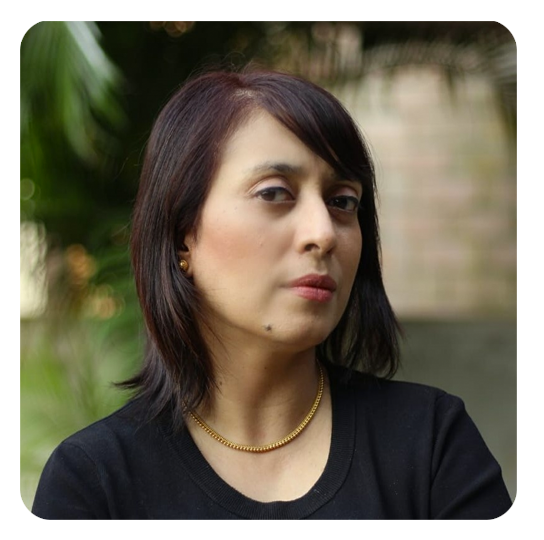Chaukhat, Darwaza and Jharokha
This is a self-paced course by Dr Anuradha Chatterjee explores architecture history and research by focussing on 'Public Life of Threshold Elements in Historic Buildings'
The course aims to uncover a theoretical history of the elements of the darwaza, the chaukhat, and the jharoka and other threshold elements in historic buildings, which mark and celebrate the passage between the private and public realms. It positions these readings in the contemporary field of surface studies that refocuses surface as substance, and as spatial.
In essence, the learner would be writing a mini theoretical history of architectural elements, which would be assisted by but not limited to formalist and historical readings. The scope of the study may cut across periods, styles, and regions―imperatives that would typically confine the writing or the re-writing of architectural history.
By focusing on elements that are neither inside nor outside (Chaukhat, Darwaza, Jharokha, and others), the course will allow learners to explore histories and theories locked within the fabric of historic buildings in a focused manner, and move away from reliance on an exclusively text and classroom based education in architectural history.
The course has been designed so that anyone can join and learn. Especially B. Arch students in their fourth and final year, Masters students, and graduates of B. Arch and M. Arch looking for an edge in preparing for research fellowships Scholarships for Masters or PhD, or who are thinking of entering teaching and Teachers interested in Anuradha's methodology.




Dr Anuradha Chatterjee
Architectural Historian, Theorist | PhD, University of New South Wales
Prof. Dr. Anuradha Chatterjee is an Indian-born Australian feminist academic practitioner in architecture and design based in Australia and India. She is the current Dean of the Faculty of Design, Manipal University Jaipur, and former Dean Academics at Avani Institute of Design. Dr Chatterjee is a registered architect in India. She is an internationally known scholar who has published three books - Surface and Deep Histories: Critiques, and Practices in Art, Architecture, and Design; Built, Unbuilt, and Imagined Sydney; and John Ruskin and the Fabric of Architecture. She is working on the fourth book as the Area Editor for Asia for the prestigious publication Bloomsbury Global Encyclopedia of Women in Architecture 1960-2015 (edited by Karen Burns and Lori Brown, forthcoming in 2021). Dr Chatterjee is Member of Board of Review, M Arch / MA in Architectural History and Theory, CEPT; Companion, Guild of St George; Member, Editorial Board for Architecture, Cambridge Scholars Publishing; Senior Research Fellow, University of Queensland; and Regional Editor (Asia Pacific), Textile: Journal of Cloth and Culture. She is an International Associate Member, American Institute of Architects; Affiliate Level 1 Member, Australian Institute of Architects; Affiliate Member, Royal Institute of British Architects.
The entire course is divided into 5 modules. Every module is divided into multiple short lectures of 7-15 minutes. Modules consist of assignments, additional resources, research material and an interactive interface that will enrich student’s learning experience
The research project aims to uncover a theoretical history of surface and decorative elements in historical architecture, which may be entirely exterior (such as frescoes) or in between (such as the darwaza, the chaukhat, and the jharoka). Participants will need to go beyond description and documentation and make a leap into suggesting new or alternative meanings, thinking closely about the ways in which these so-called decorative elements do more than decorate: they articulate a connection between the private and the public, as well as position the exterior to the public life in/of the city.
The learners enrolled will ask the following questions around a particular element. The key questions may be as follows: Do/did these elements mould or inform the interior? Do/did these elements shape the public life of the city? Are these elements capable of suggesting new ways of occupying the city from within? These elements are gendered in that they have fixed ways of presencing and/or obscuring the role of woman as citizens. However, are these elements able to provoke alternative readings that go beyond patriarchal notions of confinement and limited participation? Do these elements have a certain proportional relationship to the building within which it is articulated? What is the relationship of these elements to the human body (male and female)? More questions will be provided NOTE: Participants do not have to answer all questions but may choose to pick one and answer it.
Option 1 The learner/researcher may either take one element and go in depth and answer 2-3 questions as suggested above Option 2 The learner/researcher may take a range of elements and answer one key question as suggested above. All inquiries must be based on evidence which will include the following 1) Documentation – Drawings and photographs [these must be original and created by the learner/researcher] 2) Critical Observation 3) Review of secondary sources where they exist 4) Inclusion of oral history where possible Analytical method should synthesize 1-4.
On an average we expect the learners to invest 2 hours weekly in the course.
A short 500 word Illustrated paper. The content will be used to showcase an online exhibition. We also intend to compile the research into an online journal for public view.
Yes, upon successful completion of the course you shall receive a course completion certificate. In case, you do not complete the assignments but go through all the content and actively participate in sessions, we can offer a course Audit Certificate. Digital certificates will be issued through the Accredible portal, hence can be automatically linked to your LinkedIn profile.